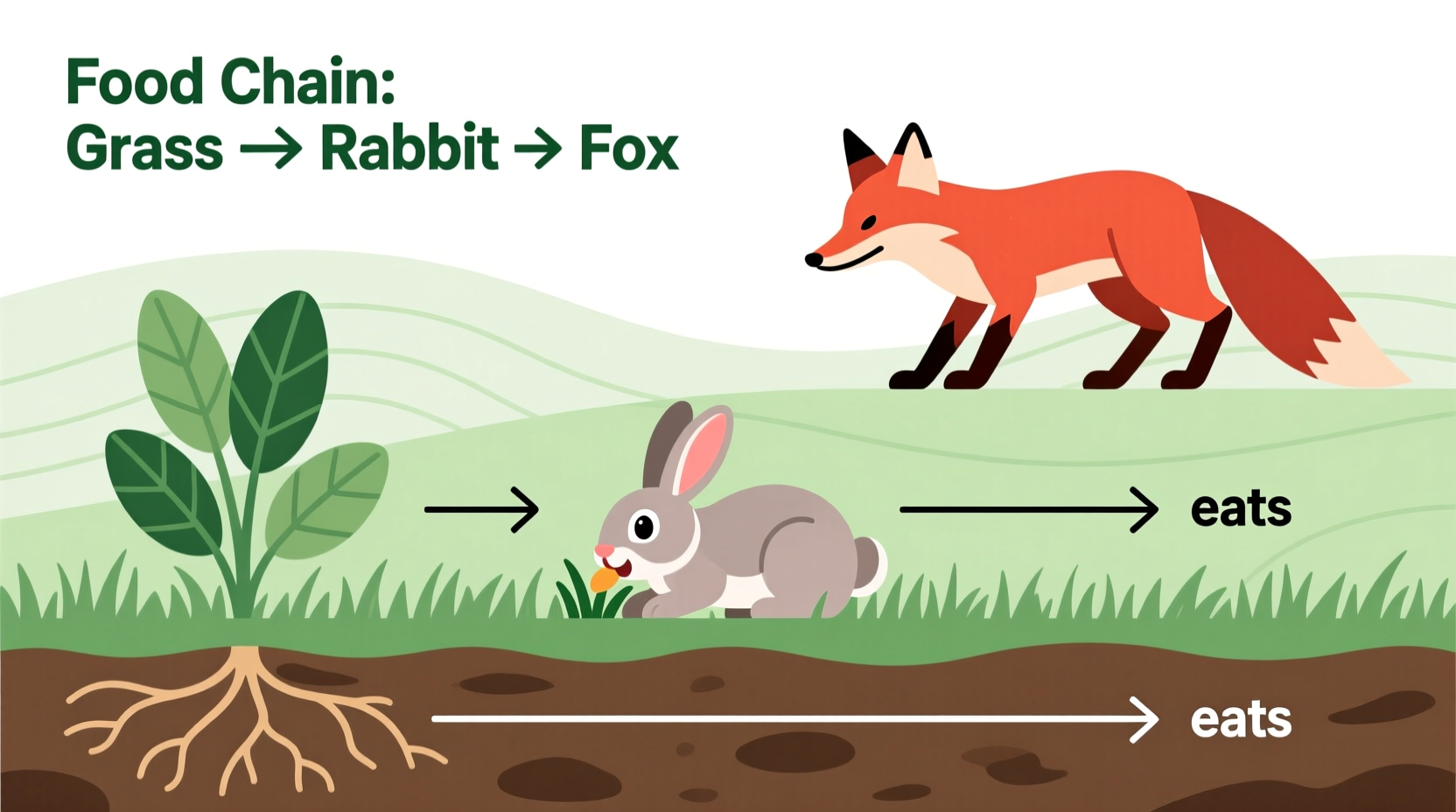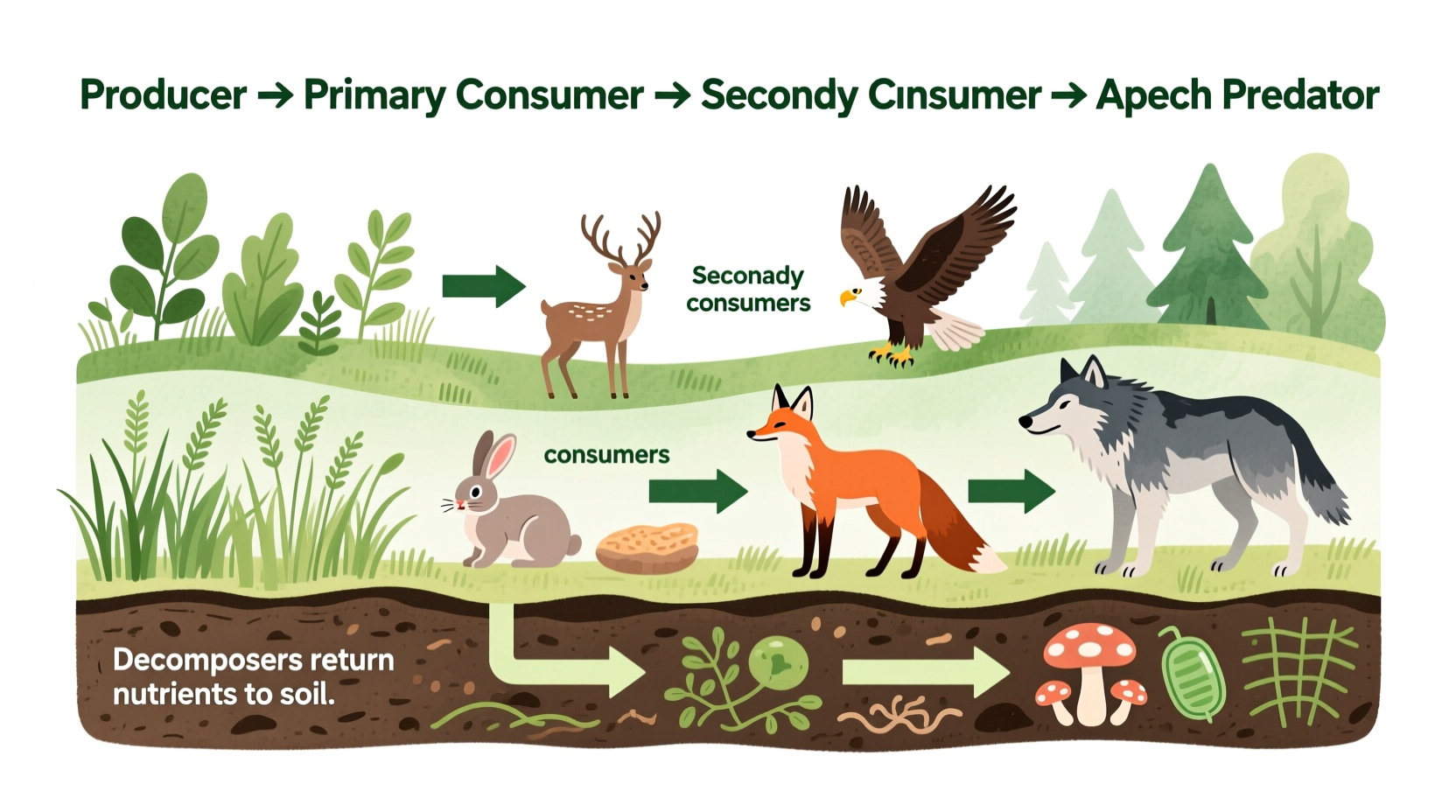Understanding food chains helps you grasp how ecosystems function, why biodiversity matters, and how human actions impact environmental health. Whether you're a student completing homework, a gardener planning your backyard ecosystem, or simply curious about nature's interconnectedness, this guide delivers clear explanations with practical examples you can apply immediately.
Breaking Down the Food Chain Basics
At its core, a food chain represents the transfer of energy through different trophic levels in an ecosystem. The journey begins with producers—primarily plants and algae that convert sunlight into energy through photosynthesis. These form the foundation for all other life.
Next come the primary consumers (herbivores) that eat producers, followed by secondary consumers (carnivores) that eat herbivores. At the top sit tertiary consumers or apex predators with no natural enemies. When organisms die, decomposers like fungi and bacteria break them down, returning nutrients to the soil for producers to use again.
According to National Geographic's ecosystem research, only about 10% of energy transfers between each trophic level, which explains why food chains rarely exceed four or five levels. This energy loss occurs through metabolic processes, heat, and incomplete consumption.

Real-World Food Chain Examples You Can Observe
Food chains aren't just textbook concepts—they're playing out in environments you encounter daily:
- Backyard ecosystem: Grass → Grasshopper → Sparrow → Hawk
- Ocean food chain: Phytoplankton → Krill → Small fish → Tuna → Shark (as documented by NOAA's marine studies)
- Forest system: Oak tree → Squirrel → Owl
Notice how each example follows the same pattern: energy flows from the sun to producers, then through increasingly larger consumers. The Britannica Encyclopedia confirms that these linear models help scientists track pollutant movement through ecosystems, such as how mercury accumulates in larger predatory fish.
Food Chain vs. Food Web: Clearing Up Confusion
Many people confuse food chains with food webs. Here's how they differ:
| Food Chain | Food Web |
|---|---|
| Linear sequence of energy transfer | Complex network of interconnected food chains |
| Simplified model showing one path | Realistic representation of multiple feeding relationships |
| Rarely exists in nature alone | How ecosystems actually function |
| Helpful for studying specific energy pathways | Necessary for understanding ecosystem stability |
Ecologists developed the food web concept in the 1920s when they realized natural ecosystems operate through multiple interconnected feeding relationships, not single pathways. This evolution in understanding explains why removing one species can have cascading effects throughout an ecosystem.
Why Food Chains Matter to Your Daily Life
You interact with food chain principles every time you make dietary choices. When you eat plant-based foods, you're consuming energy directly from producers. Choosing meat means you're accessing energy that's already passed through multiple trophic levels—requiring significantly more land, water, and resources.
Environmental scientists at major universities have documented how disruptions to food chains affect food security. For example, declining bee populations (primary consumers) threaten crop production (producers), ultimately impacting grocery store availability. Understanding these connections helps you make informed decisions about sustainable eating and conservation efforts.
Common Food Chain Misconceptions
Several myths persist about food chains that deserve clarification:
- Myth: Humans sit at the top of all food chains
Reality: While humans can be apex predators, we often occupy multiple trophic levels depending on our diet. Plant-based eaters function as primary consumers, while meat-eaters may operate as secondary or tertiary consumers.
- Myth: Longer food chains are better
Reality: Shorter chains transfer energy more efficiently. This explains why plant-based diets generally have a smaller environmental footprint than meat-heavy diets.
- Myth: Food chains exist in isolation
Reality: All food chains interconnect to form complex food webs. Removing one element affects multiple pathways—a principle conservationists use when protecting keystone species.
Research published in ecological journals shows that modern agricultural practices have simplified natural food chains, making ecosystems more vulnerable to pests and diseases. This explains why diversified farming approaches often yield more resilient food systems.
Applying Food Chain Knowledge Practically
Understanding food chains isn't just academic—it has real applications:
- Gardening: Create balanced backyard ecosystems by including plants that attract beneficial insects which then control pests
- Shopping: Recognize why certain fish (like tuna) may contain higher mercury levels due to their position in marine food chains
- Conservation: Support initiatives protecting species at various trophic levels to maintain ecosystem balance
When planning meals, consider your position in the food chain. Choosing foods from lower trophic levels generally requires fewer resources and has less environmental impact—a practical application of this ecological principle that benefits both your health and the planet.











 浙公网安备
33010002000092号
浙公网安备
33010002000092号 浙B2-20120091-4
浙B2-20120091-4